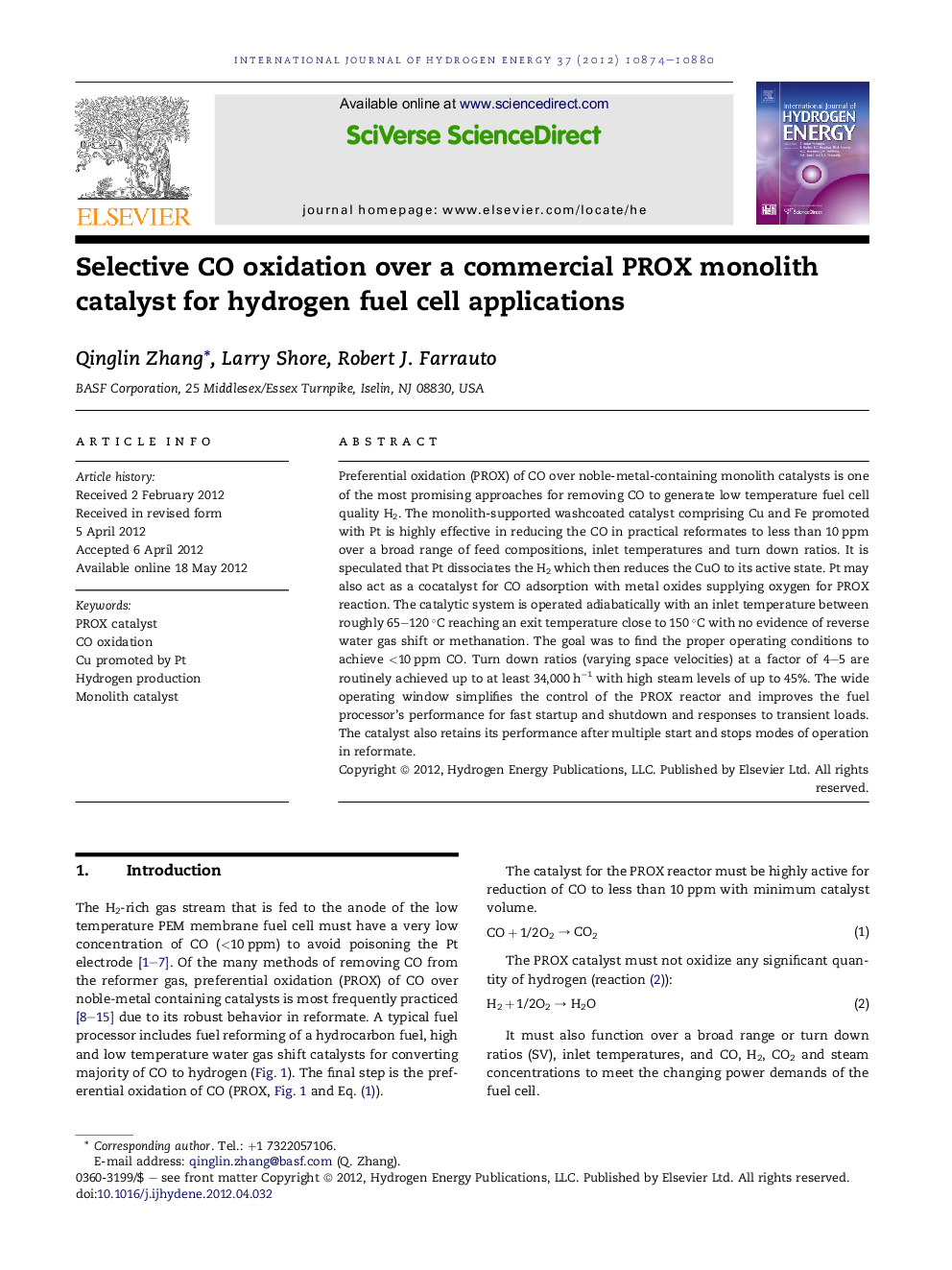| Article ID | Journal | Published Year | Pages | File Type |
|---|---|---|---|---|
| 1276372 | International Journal of Hydrogen Energy | 2012 | 7 Pages |
Preferential oxidation (PROX) of CO over noble-metal-containing monolith catalysts is one of the most promising approaches for removing CO to generate low temperature fuel cell quality H2. The monolith-supported washcoated catalyst comprising Cu and Fe promoted with Pt is highly effective in reducing the CO in practical reformates to less than 10 ppm over a broad range of feed compositions, inlet temperatures and turn down ratios. It is speculated that Pt dissociates the H2 which then reduces the CuO to its active state. Pt may also act as a cocatalyst for CO adsorption with metal oxides supplying oxygen for PROX reaction. The catalytic system is operated adiabatically with an inlet temperature between roughly 65–120 °C reaching an exit temperature close to 150 °C with no evidence of reverse water gas shift or methanation. The goal was to find the proper operating conditions to achieve <10 ppm CO. Turn down ratios (varying space velocities) at a factor of 4–5 are routinely achieved up to at least 34,000 h−1 with high steam levels of up to 45%. The wide operating window simplifies the control of the PROX reactor and improves the fuel processor’s performance for fast startup and shutdown and responses to transient loads. The catalyst also retains its performance after multiple start and stops modes of operation in reformate.
► The monolith catalyst comprising Cu and Fe promoted with Pt is highly effective in reducing the CO in practical reformates to less than 10 ppm over a broad operating window. ► The catalyst is highly steam tolerant can be operated at varying space velocities up to 34,000 h−1 with high steam levels of up to 45%. ► The catalyst retains its performance after multiple start and stops modes of operation in reformate and is particularly suitable for hydrogen fuel cell applications.
